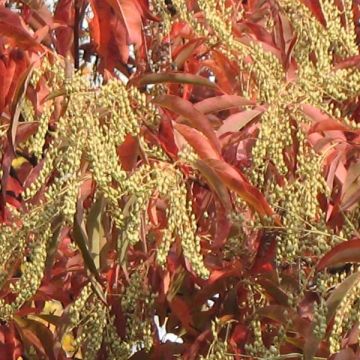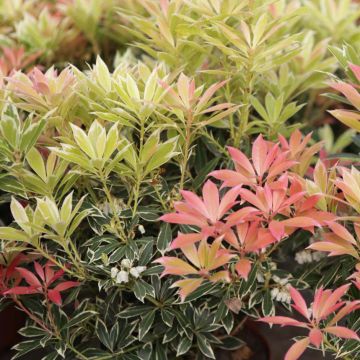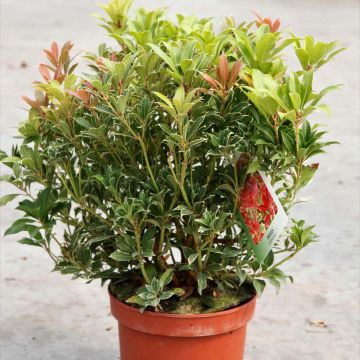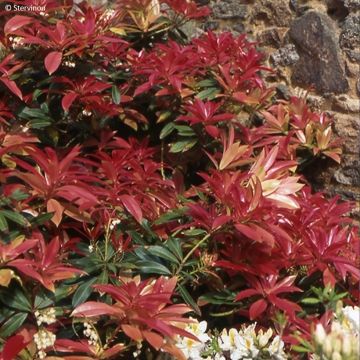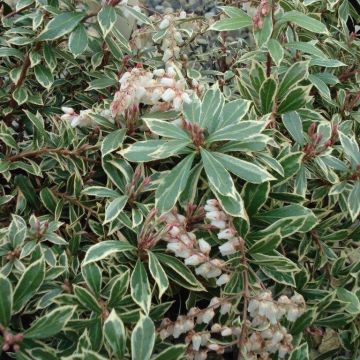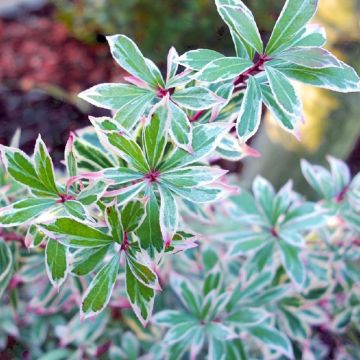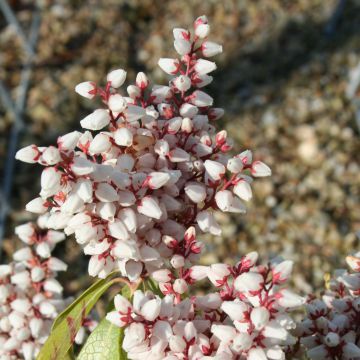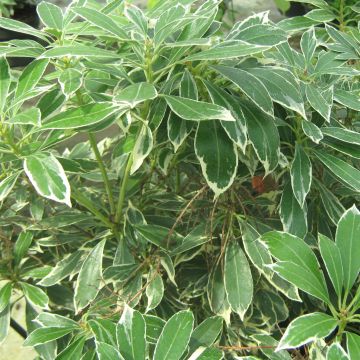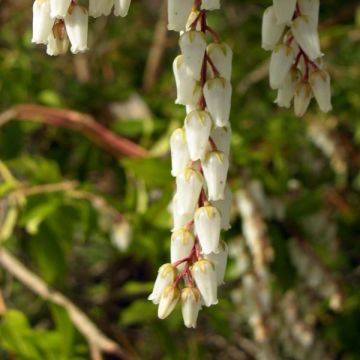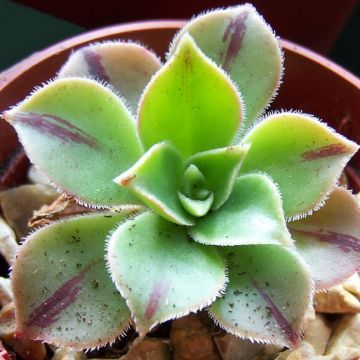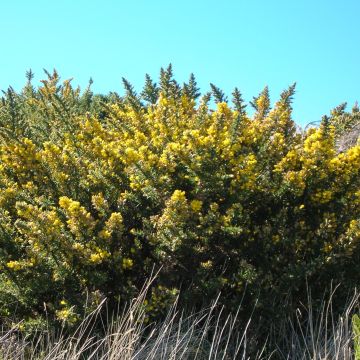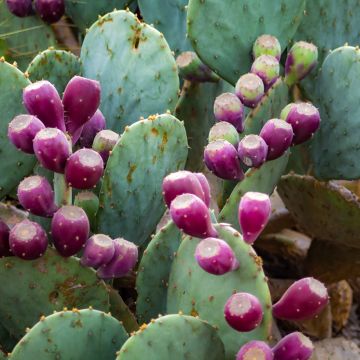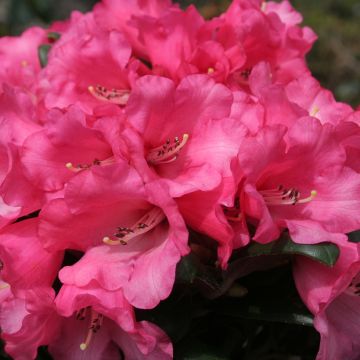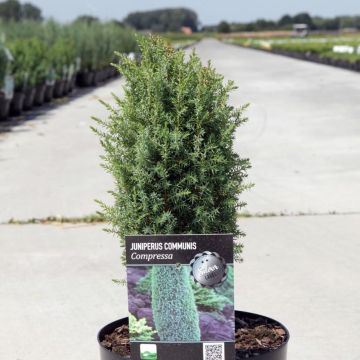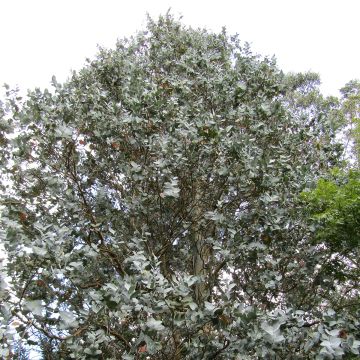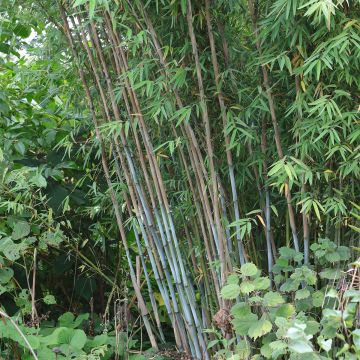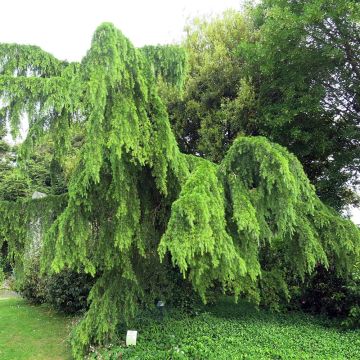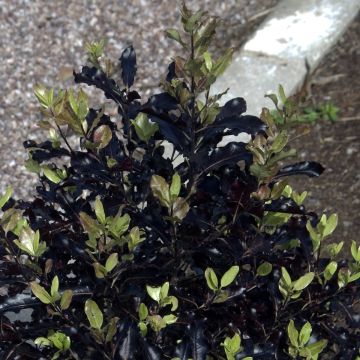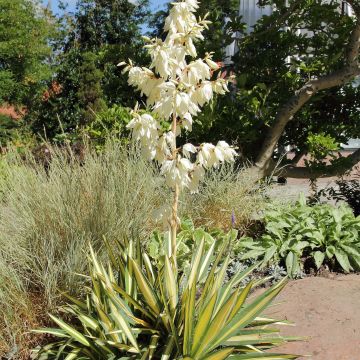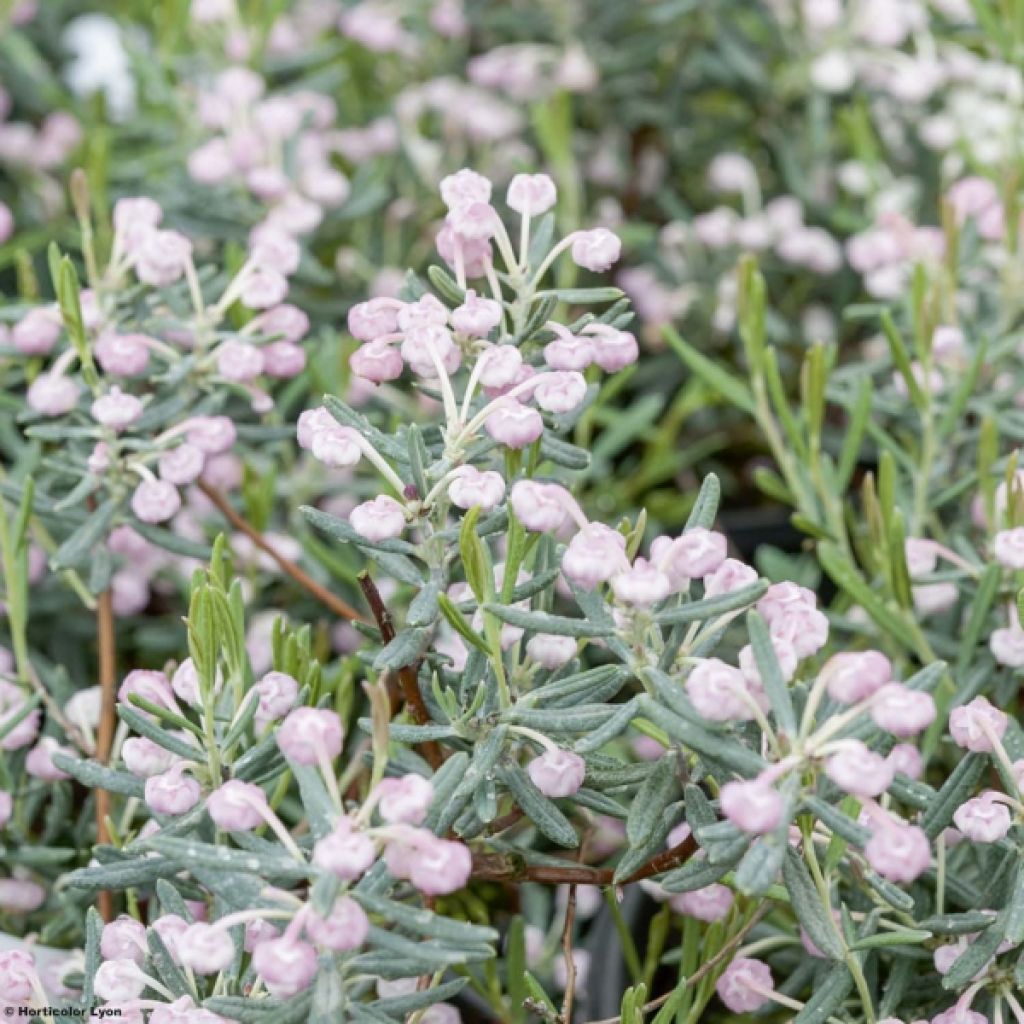

Andromeda polifolia Blue Ice
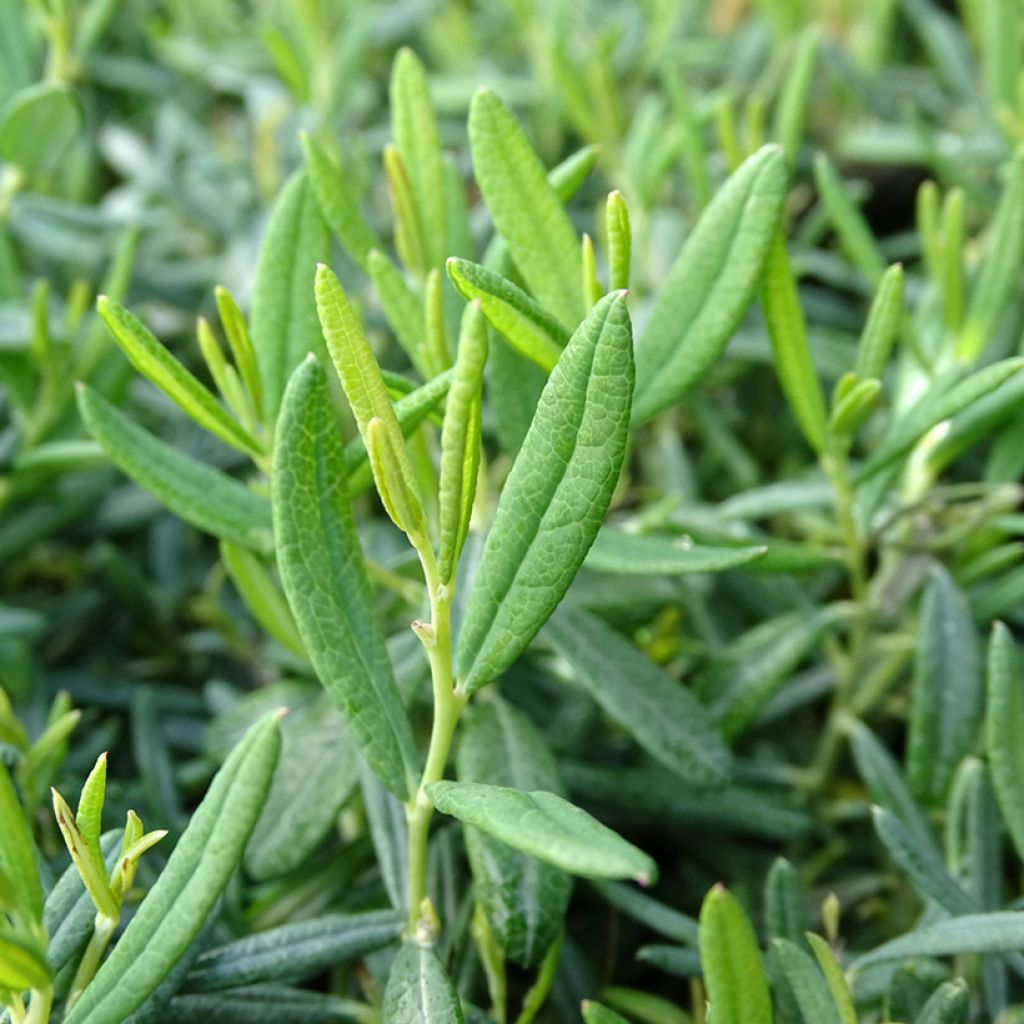

Andromeda polifolia Blue Ice
Andromeda polifolia Blue Ice
Andromeda polifolia Blue Ice
Bog Rosemary, Marsh Andromeda, Marsh Holy Rose
Received and planted the Andromeda in late March-early April 2023 along with some heathers, at the border, in acidic soil, died coming out of the winter (Paris region).
Christine, 22/03/2024
This item cannot be shipped to the selected country
Delivery charge from €5.90
Delivery charge from €5.90
More information
Schedule delivery date,
and select date in basket
This plant carries a 24 months recovery warranty
More information
We guarantee the quality of our plants for a full growing cycle, and will replace at our expense any plant that fails to recover under normal climatic and planting conditions.
From €5.90 for pickup delivery and €6.90 for home delivery
Express home delivery from €8.90.
From €5.90 for pickup delivery and €6.90 for home delivery
Express home delivery from €8.90.
Does this plant fit my garden?
Set up your Plantfit profile →
Description
Andromeda polifolia 'Blue Ice', also known as Bog Rosemary or Bog Andromeda, is a compact and bushy shrub that is truly ornamental with its evergreen foliage that is silver-blue reminiscent of rosemary. It showcases a long flowering period with charming clusters of pink bells. It is cultivated like a Japanese azalea, in a pot on the terrace, in a cool rockery, or in a heather bed, preferably in partial shade.
Andromeda polifolia 'Blue Ice' belongs to the Ericaceae family, just like heathers, rhododendrons, and strawberry trees. It is a Canadian horticultural selection that has foliage that is more silver and bluish than the wild species. The latter, listed as a protected species in France, is a small shrub that naturally grows in peaty marshes in our mountains, at medium altitudes. The 'Blue Ice' cultivar has a spreading and rounded habit, forming a cushion shape. Slow-growing, it reaches a height of about 30cm (11.8in) with a spread of 40-50cm. The shrub develops slender, upright branches adorned with leathery, thin, slightly curled leaves with pointed tips, measuring 1 to 3cm (0.4 to 1.2in) long. Their spring colour is silver-blue, then turns bluish-green in summer. The plant blooms from April to June. At the tips of the stems, small clusters of 2 to 8 pendulous urn-shaped flowers appear, in a lovely bright pink colour, resembling those of strawberry trees. Each flower measures less than 1cm (0.4in) long. The fruit is a globular capsule that starts off pink and turns black in early autumn, standing out well against the foliage.
Andromeda 'Blue Ice', very cold-hardy and resistant to diseases, is a plant that nevertheless has specific soil, exposure, and climate requirements. If you have success growing Japanese azaleas, rhododendrons, and blueberries, this shrub will thrive in your garden. It is fairly easy to cultivate in pots, using acidic and moist soil, with non-calcareous water for watering, and avoiding direct sunlight. This small shrub can be planted in partially shaded alpine rockeries, alongside low-growing and upright conifers, for example. Use it also to create blue borders on the edge of your groves or to create colorful masses in the more humid parts of the garden. It pairs well with other heather-loving shrubs such as Kalmias, Pieris, rhododendrons, and other azaleas.
Report an error about the product description
Andromeda polifolia Blue Ice in pictures
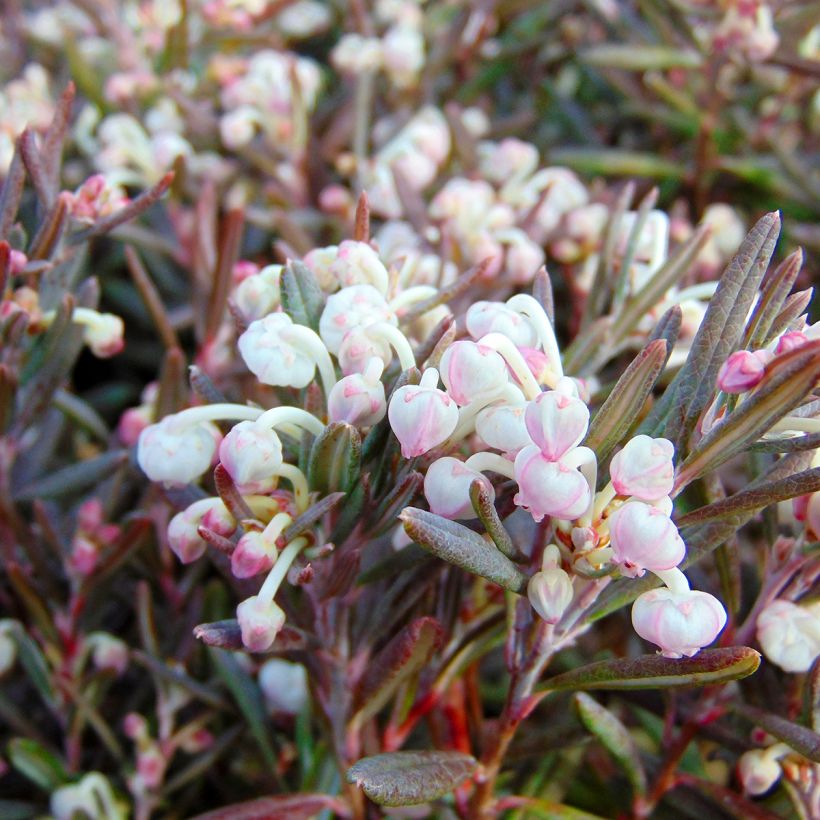

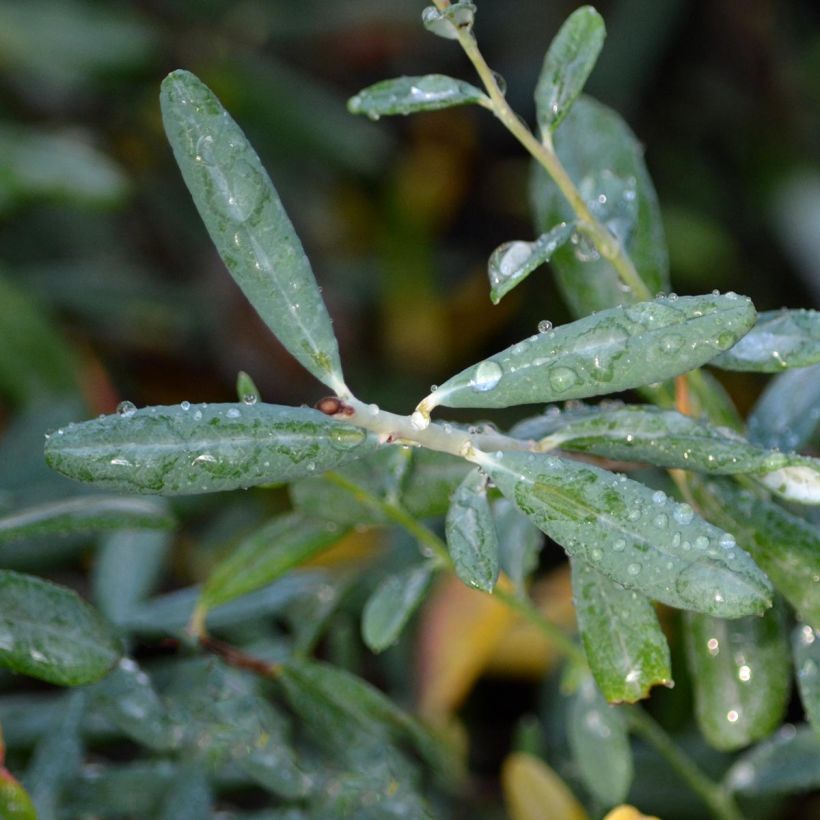

Plant habit
Flowering
Foliage
Botanical data
Andromeda
polifolia
Blue Ice
Ericaceae
Bog Rosemary, Marsh Andromeda, Marsh Holy Rose
Cultivar or hybrid
Other Pieris
Planting and care
The 'Blue Ice' Andromeda is planted in autumn or spring in a mixture of 2/3 heath soil and 1/3 non-calcareous garden soil mixed with turf. This bush appreciates atmospheric humidity and does not tolerate excessively hot climates. Choose a sunny location, but not scorching, and sheltered from prevailing winds. Water abundantly with non-calcareous water and mulch with maritime pine bark to preserve freshness. It must not lack water. Then, apply heath soil fertilizer for bushes every year in spring and add heath soil.
Planting period
Intended location
Care
-
, onOrder confirmed
Reply from on Promesse de fleurs
Evergreen shrubs
Haven't found what you were looking for?
Hardiness is the lowest winter temperature a plant can endure without suffering serious damage or even dying. However, hardiness is affected by location (a sheltered area, such as a patio), protection (winter cover) and soil type (hardiness is improved by well-drained soil).

Photo Sharing Terms & Conditions
In order to encourage gardeners to interact and share their experiences, Promesse de fleurs offers various media enabling content to be uploaded onto its Site - in particular via the ‘Photo sharing’ module.
The User agrees to refrain from:
- Posting any content that is illegal, prejudicial, insulting, racist, inciteful to hatred, revisionist, contrary to public decency, that infringes on privacy or on the privacy rights of third parties, in particular the publicity rights of persons and goods, intellectual property rights, or the right to privacy.
- Submitting content on behalf of a third party;
- Impersonate the identity of a third party and/or publish any personal information about a third party;
In general, the User undertakes to refrain from any unethical behaviour.
All Content (in particular text, comments, files, images, photos, videos, creative works, etc.), which may be subject to property or intellectual property rights, image or other private rights, shall remain the property of the User, subject to the limited rights granted by the terms of the licence granted by Promesse de fleurs as stated below. Users are at liberty to publish or not to publish such Content on the Site, notably via the ‘Photo Sharing’ facility, and accept that this Content shall be made public and freely accessible, notably on the Internet.
Users further acknowledge, undertake to have ,and guarantee that they hold all necessary rights and permissions to publish such material on the Site, in particular with regard to the legislation in force pertaining to any privacy, property, intellectual property, image, or contractual rights, or rights of any other nature. By publishing such Content on the Site, Users acknowledge accepting full liability as publishers of the Content within the meaning of the law, and grant Promesse de fleurs, free of charge, an inclusive, worldwide licence for the said Content for the entire duration of its publication, including all reproduction, representation, up/downloading, displaying, performing, transmission, and storage rights.
Users also grant permission for their name to be linked to the Content and accept that this link may not always be made available.
By engaging in posting material, Users consent to their Content becoming automatically accessible on the Internet, in particular on other sites and/or blogs and/or web pages of the Promesse de fleurs site, including in particular social pages and the Promesse de fleurs catalogue.
Users may secure the removal of entrusted content free of charge by issuing a simple request via our contact form.
The flowering period indicated on our website applies to countries and regions located in USDA zone 8 (France, the United Kingdom, Ireland, the Netherlands, etc.)
It will vary according to where you live:
- In zones 9 to 10 (Italy, Spain, Greece, etc.), flowering will occur about 2 to 4 weeks earlier.
- In zones 6 to 7 (Germany, Poland, Slovenia, and lower mountainous regions), flowering will be delayed by 2 to 3 weeks.
- In zone 5 (Central Europe, Scandinavia), blooming will be delayed by 3 to 5 weeks.
In temperate climates, pruning of spring-flowering shrubs (forsythia, spireas, etc.) should be done just after flowering.
Pruning of summer-flowering shrubs (Indian Lilac, Perovskia, etc.) can be done in winter or spring.
In cold regions as well as with frost-sensitive plants, avoid pruning too early when severe frosts may still occur.
The planting period indicated on our website applies to countries and regions located in USDA zone 8 (France, United Kingdom, Ireland, Netherlands).
It will vary according to where you live:
- In Mediterranean zones (Marseille, Madrid, Milan, etc.), autumn and winter are the best planting periods.
- In continental zones (Strasbourg, Munich, Vienna, etc.), delay planting by 2 to 3 weeks in spring and bring it forward by 2 to 4 weeks in autumn.
- In mountainous regions (the Alps, Pyrenees, Carpathians, etc.), it is best to plant in late spring (May-June) or late summer (August-September).
The harvesting period indicated on our website applies to countries and regions in USDA zone 8 (France, England, Ireland, the Netherlands).
In colder areas (Scandinavia, Poland, Austria...) fruit and vegetable harvests are likely to be delayed by 3-4 weeks.
In warmer areas (Italy, Spain, Greece, etc.), harvesting will probably take place earlier, depending on weather conditions.
The sowing periods indicated on our website apply to countries and regions within USDA Zone 8 (France, UK, Ireland, Netherlands).
In colder areas (Scandinavia, Poland, Austria...), delay any outdoor sowing by 3-4 weeks, or sow under glass.
In warmer climes (Italy, Spain, Greece, etc.), bring outdoor sowing forward by a few weeks.

































